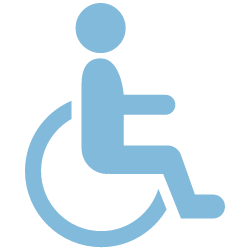
Working can be risky to the health and well-being of adults. According to the Council for Disability Awareness, around one-quarter of today’s 20-year-olds have a chance of becoming disabled at some point in their career before retirement. On average, a long term disability incident lasts 34.6 months – which is almost three years of lost work and income.
What happens when an employee is suddenly injured off the job or faces an unexpected catastrophic illness?
They want to know they’ll still have income to pay bills and cover living expenses while they recover. That’s when a short or long term disability program may be able to help.¹
Short-term Disability
![]() Short term disability (STD) is a type of insurance that pays a percentage of an employee’s salary for a specified amount of time, if they are ill or injured, and cannot perform the duties of their job. Generally, the benefit pays around 40 to 60 percent of the employee’s weekly gross income.
Short term disability (STD) is a type of insurance that pays a percentage of an employee’s salary for a specified amount of time, if they are ill or injured, and cannot perform the duties of their job. Generally, the benefit pays around 40 to 60 percent of the employee’s weekly gross income.
Coverage usually starts anywhere from one to 14 days after an employee suffers a condition that leaves them unable to work. The time of coverage may vary from 9 to 52 weeks from eligibility. Many times, employees are required to use sick days before short term disability kicks in if it’s an illness that keeps them out of work for an extended period of time.
For this reason, employers often have other types of insurance that cover workplace injuries vs. those that occur off the job. There may also be a different policy for short term disability for sicknesses and injuries. If an employee must be out for longer than the short term disability benefit covers, then either a long term disability plan or permanent disability kicks in. This may happen at 10 to 53 weeks from the date of eligibility.¹
If you would like to offer a group vision plan to your employees, click the button below:
Long-term Disability

According to the Occupational Safety & Health Administration,”4,821 workers were killed on the job in 2014, which is an average of more than 92 a week or more than 13 deaths every day.” Since the 70s, there have been massive safety measures taken to protect the health and well-being of employees, but still unexpected illnesses and injuries happen all the time. Additionally, the Council for Disability Awareness reports that the average long term disability absence is 34.6 months.
The majority of injuries and illnesses are caused by musculoskeletal injuries and cancer.
This is why employers should have a long term disability insurance plan in place to protect employees and ensure they return to work in a reasonable amount of time.
Long term disability insurance covers a portion of an employee’s income (around 50-70%) when the employee has become injured or seriously ill. It’s important to note that if an employee is hurt off the job, worker’s compensation will not cover them. When an employee cannot work for an extended period of time, a long term disability plan can help cover a portion of the employee’s salary. Long term disability usually kicks in after a short term disability policy has run out. This happens around 10 to 53 weeks after an eligible event, with the average being 26 weeks.
The US Department of Labor reports that, “Most long-term plans (88 percent) have a maximum amount payable and the median maximum payout in 2014 was $8,000 per month.” ¹
If you would like to offer a group dental plan to your employees, click the button below:
*The coverages listed in the sidebar are for example only, and are subject to the actual contracts and summaries of coverage listed in your policy or certificate from the insurance carrier. The listed “example policies” that are shown on our website may be materially different or incorrect from actual policies. These examples are for illustration purposes only.
[1] https://www.thebalance.com/short-term-disability-basics-1177839
